Real Indian Stuff
Pueblos, American Indian settlements, are found throughout the southwestern US. They consist of multistoried adobe houses built by the Pueblo people. Today I visit the Taos Pueblo. 35 people live within the Pueblo full time and 1,000 plus in the town nearby.
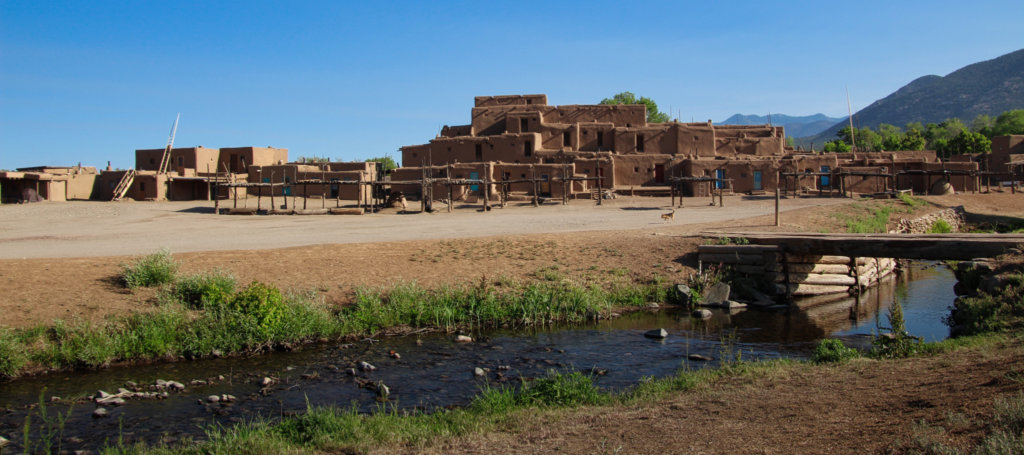
The Taos people have a detailed oral history which is not divulged due to religious privacy. Archaeologists say that ancestors of the Taos Indians lived in this valley long before Columbus discovered America. Ancient ruins in the Taos Valley indicate the Taos people lived here nearly 1000 years ago. The main part of the present buildings was most likely constructed between 1000 and 1450 A.D.
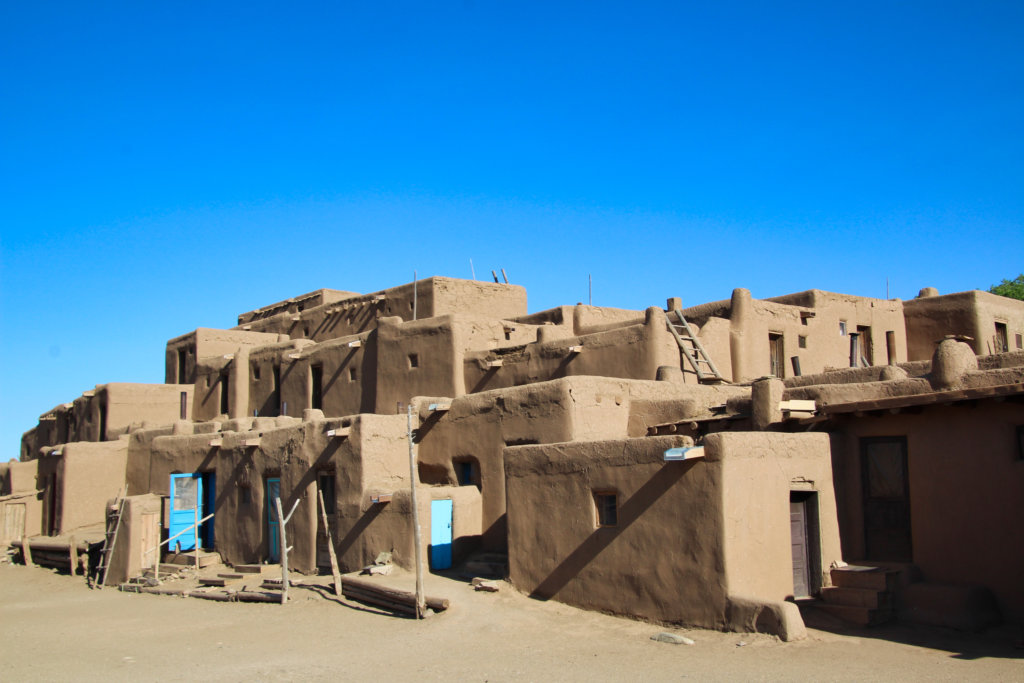
They appeared much as they do today when the first Spanish explorers arrived in Northern New Mexico in 1540. The two structures called Hlauuma (north house) and Hlaukwima (south house) are said to be of similar age. They are considered to be the oldest continuously inhabited communities in the USA.
Building a Pueblo
I remember learning of adobe (earth mixed with water and straw) in grade school. To see the Pueblos actually made from the sun-dried bricks is amazing. The walls are several feet thick. The roofs of each of the five stories are supported by large timbers hauled down from the mountain forests. The whole roof is covered with packed dirt.
The outside surfaces of the Pueblo are continuously maintained by replastering with think layers of mud. Interior walls are coated with thin whitewashes to keep them clean and bright. The Pueblo is actually many individual homes, much like modern-day apartments built side-by-side with common walls but no connecting doorways. I learn the ladders propped up all through the village are from the earlier days when there were no doors or windows and entry is gained only from the top. This protects the villagers from attacking tribes. They would pull their ladders up to the roof and they were then safe from invasion.
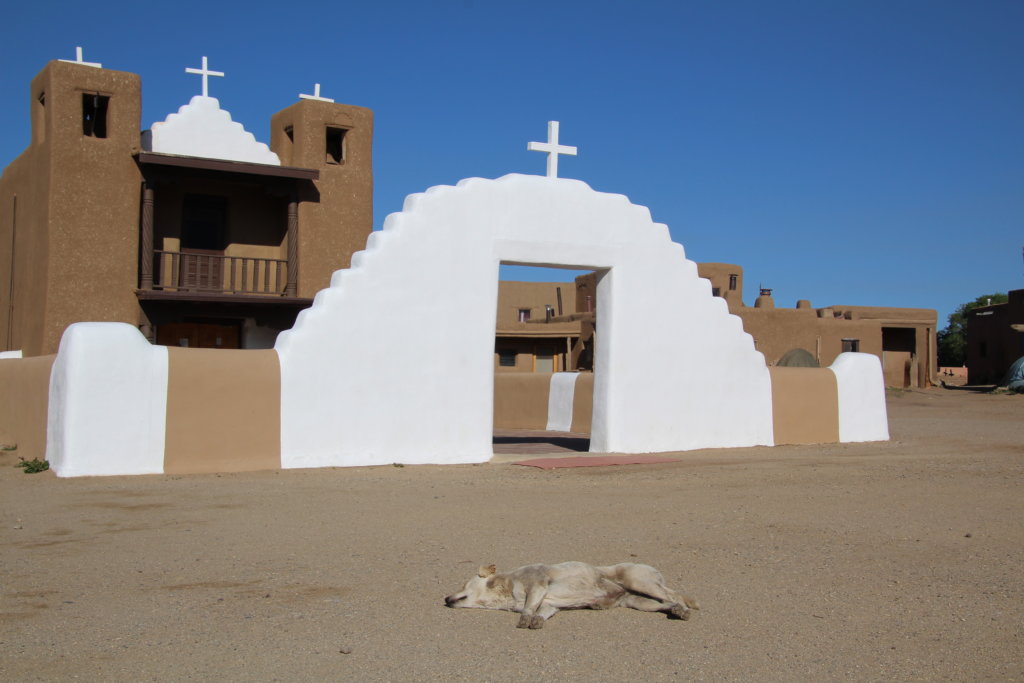
Open for business
The gates to the pueblo open at 8:00 am with guided tours beginning at 9:00. I am the first and only one to arrive when the gates open. Entering the village is a bit eerie as no one is around. I appreciate the fact that I’m able to wander around and take as many photos as I like unfettered. However, there are many rules and signs informing of proper etiquette when visiting. I am a bit on edge as I want to be respectful and not just some gawking tourist invading sacred lands. Several dogs run up to me but posted signs instruct not to feed or even pet the animals. I find this hard to do when a friendly dog is trying to lick my face.

After the sun rises in the sky, the villagers begin to open up their homes that then become small makeshift shops.
Red Willow
A bit apprehensive to enter peoples homes, I spot a sign in front of one home that announces “Real Indian Stuff “. I like this open invitation, and head on it. Upon entering, I see an older Native American gentleman sporting a Navy Veteran hat, he is looking down busily cutting strips of leather and wrapping them around a metal wire form.

Red Willow, his Indian name, cheerfully asks “Where you from?” When I respond Kentucky. He looks up and leans back and with a bright smile asks in a confirming manner “Ah, the land of beautiful horses and fast women”. That response takes me back. I take no offense to the old adage, but I certainly didn’t expect that to be known in a remote Pueblo in New Mexico.
Real Indian Stuff
Turns out through his Navy career and travels thereafter, Red Willow is quite worldly. He is very engaging and I don’t know why I expect the encounter to be any different. However, I find I am hypersensitive about saying or doing something offensive. We share about 10 minutes of stories and laughs. As we are saying our goodbyes he hands me a small dog that he had created from the leather and wire. I’m unsure if this is a gift or a strong suggestive selling technique. I had seen similar items for $5 on his shelf; he didn’t refuse the $5 that I offered him. Being that the site is a sacred and spiritual site, I took the offering as a symbol of some sort. I was precluded from petting dogs earlier and now a native hands me one he made.
Water Flower
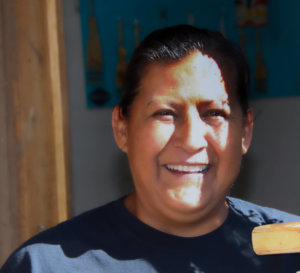
I see a sign for water flower. I have never heard of a water flower so I venture into another small home/shop to investigate. Marie, aka Water Flower, cheerfully greets me. I confess that I thought she was selling water flowers. She excitedly explains her Indian name loosely translates to the mountain peak behind the settlement.
Small tables display various goods, but something called a smudge stick piques my curiosity. She explains, that when ignited the smoke from the foot-long, yarn wrapped bundle of sage, cedar and lavender wards off evil spirits. I pause and say I can’t think of any evil spirits that I need to chase away. She offers that she places the stick on the dash of her car and the heat makes the stick a great air freshener. In addition, they also help with her sinus problems.
Wait! What?
Car, air freshener, sinus problems? I have interacted with Native Americans from Florida to Oklahoma. I don’t know why I still have such a distorted view of these wonderful people. Somehow expecting them to still be in tee-pees, smoking peace pipes and hating the white man. Their culture has evolved just like the rest of us. They, however, do a much better job honoring and respecting theirs.
It relieves me when I overhear another visitor asking one of the young natives how they survive without the internet. To which she retorted, “Oh, we have Internet”. Ha, I’m not the only relic in the village today.
Still More to See
Today’s visit was quite educational an entertaining and I thoroughly enjoy my time here. My only disappointment is learning of the Feasts. About 13 days out of the year, religious celebrations are open to the public. The feast days are an integral part of the Pueblo culture. Celebrated with food, dance, and competitions. The competitions between the north and south houses include foot races and a bear grease pole climb. To find the exact dates of the feasts one only needs to look to their web page. I’m pretty sure the big tee-pee with the power generator outside houses their web servers.

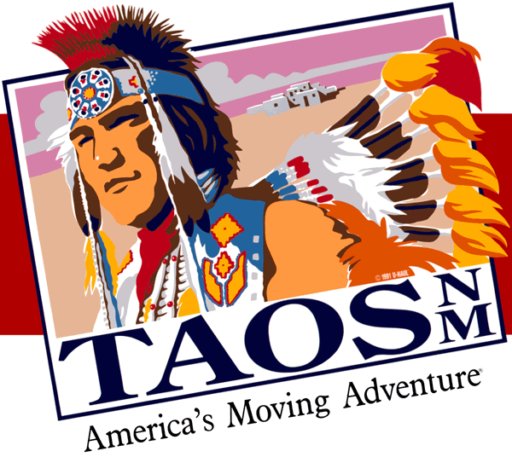

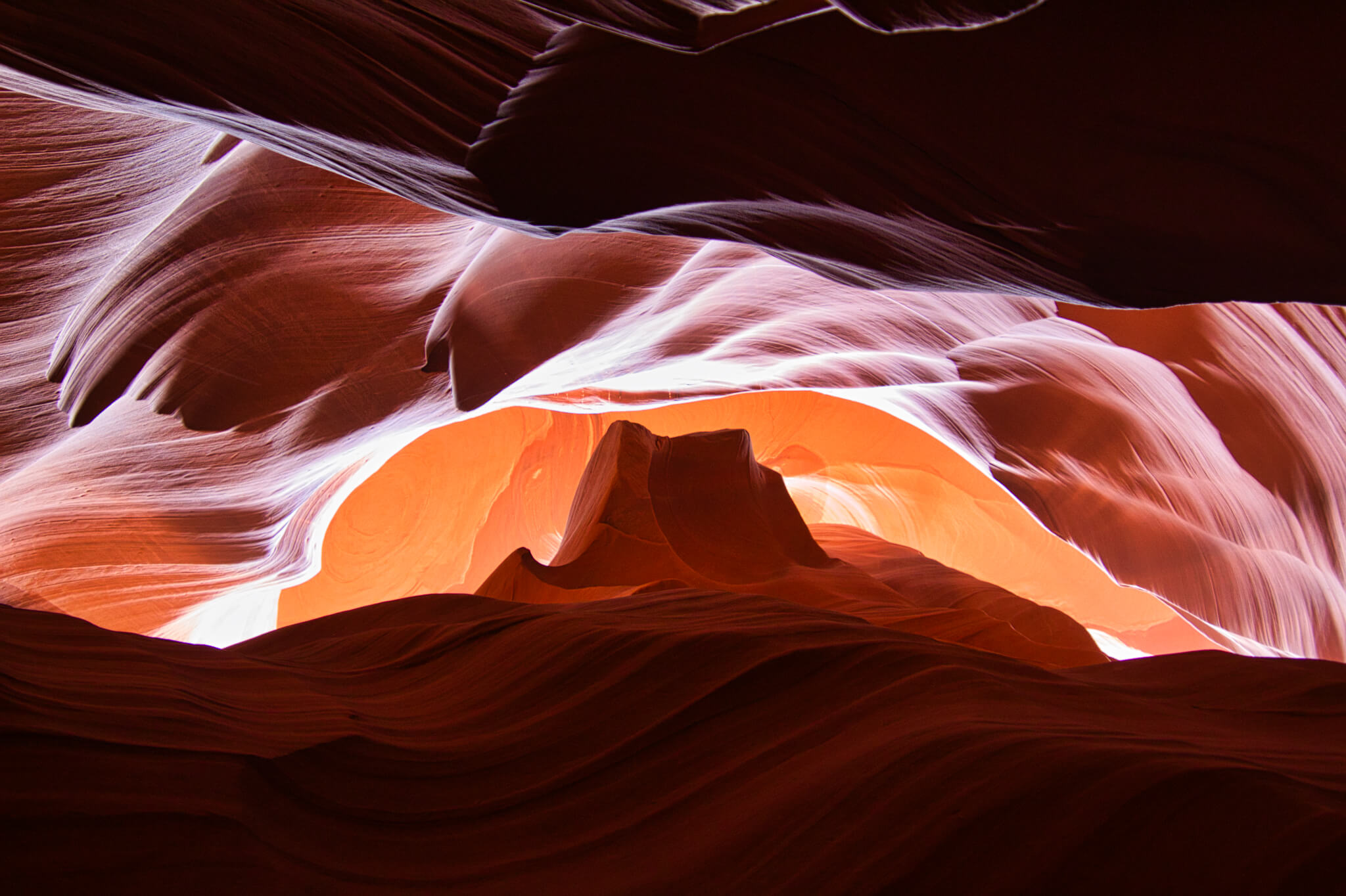
Loved your Taos Pueblo write up. Just FYI, We own a micaceous clay rendering of a False Face Spirit made by Red Willow which we purchased from Real Indian Stuff about 10 years ago. It is one of our prized collectibles, especially due to the colorful back story. He had a military photo of himself so his service buddies would recognize him. Thanks for the memories.
Oh you just made my day. Taos in general and Red Willow specifically is certainly memorable. I still have the leather dog he made me. Thanks for taking time to comment!
When you visited the Pueblo settlement did you sense anything negative in a spiritual sense?
No not at all. I was surprised by how secular it seemed. I appreciated being introduced to some of spiritual teachings etc but I didn’t experience a spiritual feeling one way or another.